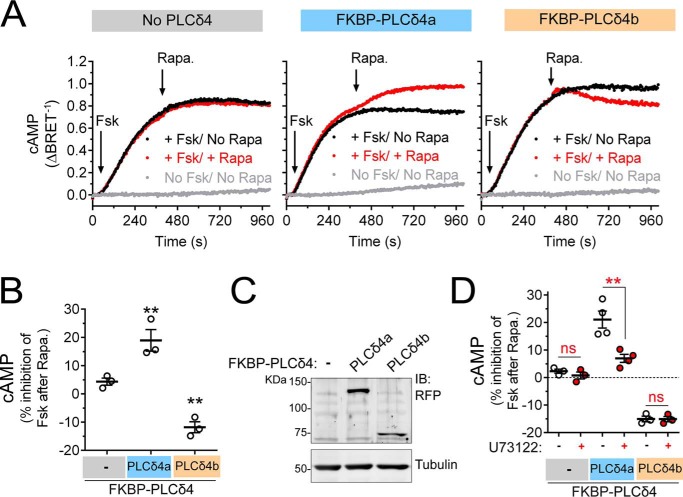Figure 10.
PLCδ4b inhibits forskolin-induced cAMP formation. A–C, BRET-based cAMP measurements upon rapamycin-mediated recruitment of FKBP-PLCδ4a or FKBP-PLCδ4b were performed exactly as described in Fig. 8D. HEK293T cells expressing the cAMP sensor Nluc–EPAC–VV, Lyn11-FRB, and the indicated FKBP-PLCδ4 constructs (0.25 μg DNA per well) were treated at the indicated times (arrows) with forskolin alone (3 μm, black), forskolin followed by rapamycin (0.5 μm, red), or no compound (gray). One representative experiment is shown in A, and a scatter plot of rapamycin-induced inhibition of forskolin-stimulated cAMP levels from n = 3 is shown in B. **, p < 0.01 compared with the control cells (−) using the Student's t test. An immunoblot of cell lysates from one representative experiment is shown in C. D, BRET-based cAMP measurements upon rapamycin-mediated recruitment of FKBP-PLCδ4a or FKBP-PLCδ4b were performed and quantified as described in A–C in the presence of the PLC inhibitor U73122 (+) (10 μm, 60 min preincubation) or DMSO (−). Results are the average ± S.E. of n = 3–4. **, p < 0.01; ns = not significant compared with control cells pretreated with DMSO (−) using the Student's t test.

